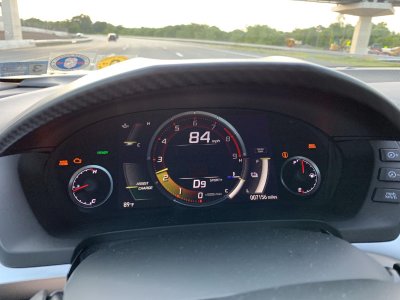- Joined
- 23 August 2016
- Messages
- 362
If Honda has bought back several NC1s that exhibit this problem
(and I have no reason to doubt DocL's reports that they have),
then they have several failing cars at their disposal. Honda could
be putting instruments on those cars and driving the hell out of
them until they figure out what is wrong.
Is anyone satisfied by the story that weak 12V batteries are
causing finicky systems to misbehave? If it's true, the electronics
are not designed well. Any logic circuits in a car should be run
off a power supply that's immune to typical voltage fluctuations
in the car's electrical system. You should see a battery struggle
to run lights, power seats, and so on before any of the control
systems start to misbehave from low voltage.
A typical home computer power supply can maintain steady
5V and 12V DC outputs even if the AC line voltage wobbles
all over the place. This is not rocket science.
Is Corporate on the case or aren't they? The customers shouldn't
be doing their testing for them. So far there seems to be no better
guidance than to swap 12V batteries (which are only a couple years
old at most, so why are they bad?) and hope for the best.
Yes there have been cars that were bought back. And symptom #1 for most if not all of them is all the warning lights came on and the car maybe went into a limp mode. As I’ve stated before, our control modules are all networked together and when a fault is detected on one module, all the others cry foul too. So something simple like a blockage or leak in the evaporative emissions system will set off the check engine, then usually brake system next, then electric steering, and the lights keep coming on till you’re looking at a Christmas tree. Another car with a severed wheel speed sensor will show a Christmas tree as well. And another car with a cylinder head that destroyed itself will also have all the lights on. All different causes...same symptom. So “cars at their disposal” means nothing other than ideas for a guess at what might be the cause for the OP’s car.
Every dealer gets vehicles in all the time where complaints can’t be duplicated. There are resources available from AHM where similar vehicles with the same symptoms are databased and what eventually fixed them. Sounds like the dealer in the OP’s case used that resource and a battery is their best guess. A long shot guess in my professional opinion. But the 12v battery in the NSX is a specific part not shared with any other Honda. Due to the low volume nature of this part, if there is some kind of weakness with this particular part (like an internal short or open very briefly), they may not know about it yet.
There are circuits in cars that run on steadily maintained 5v which is provided by the PCM. Everything else, including the PCM is powered by the 12v system. What’s pertinent to this particular case is the control modules are designed to run at anywhere from 9-16v given that the 12v system is really never at an exact 12v. Some of the control modules are very sensitive to a drop in voltage, even if it’s for a split second. The ABS/VSA and SRS systems are ones that I frequently see on other cars with codes stored for low voltage.
Corporate doesn't seem to care too much. They outsource the entire buyback protocol to Stericycle. When the car is taken back we really have no idea what is going to happen to it afterwards.
I also don't understand how a weak battery can render the car useless. Doesn't it have an alternator? Or does it have something to do with CANbus or hybrid system.
The car eventually makes it way back to AHM. They will usually wind up in training centers all across the country and get disassembled and reassembled for years to come. But unless you’ve have a kilo of coke stashed in the door panel or something, what do you care what gets done with the car? Take your check and move on.
There is no conventional alternator. Just as there is no conventional starter either. As is the case with hybrids, the “pancake motor” between the engine and transmission performs both of those functions as well as providing/assisting with propulsion. When it’s charging, its voltage is sent to the AC-DC inverter which then charges the 12v battery. It’s just links in a chain. And the battery one of the last links before the 12v control systems of the vehicle get power.
Now, had I paid like $75k for an un-complicated and un-sophisticated mid-engine Chevy with a push-rod antique engine, and that Chevy malfunctioned?......I’D BE PISSED!
Doesn’t matter if it’s a $75k Stingray, a $175k NSX, or a $20k Civic. All modern cars have sophisticated electrical systems with 20-50 control modules on board. I’ve seen soft set connectors or weak terminal pin fits in wire harnesses cause a variety of intermittent almost impossible to duplicate problems in our vehicles.






